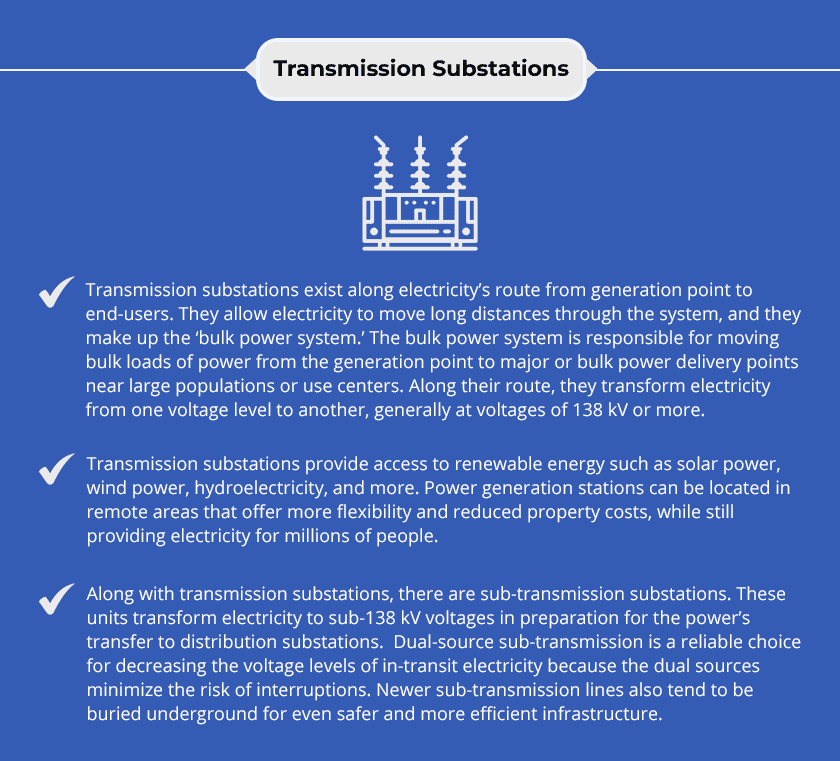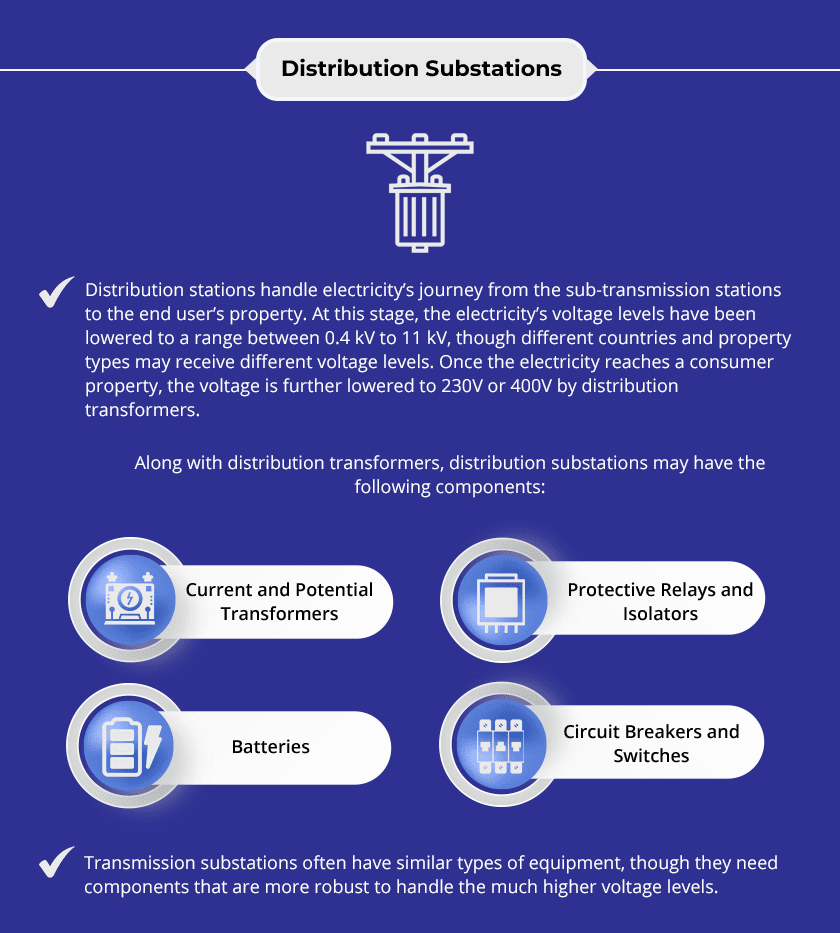Transmission vs Distribution Substations
Substations form vital parts of the electrical system. Substations are formed by large collections of electrical devices and hardware gathered in a single location. After the electricity is generated, transmission and distribution substations prepare the power for use in residential, commercial, industrial, and municipal locations.
Different types of stations perform different functions, such as reducing or increasing the voltage of the electricity, and electricity will often flow through multiple stations in its journey to an end location. Learn more about transmission and distribution substations and the structures they need to provide optimal, safe energy.
Transmission Substations
Transmission substations exist along electricity’s route from generation point to end-users. They allow electricity to move long distances through the system, and they make up the ‘bulk power system.’ The bulk power system is responsible for moving bulk loads of power from the generation point to major or bulk power delivery points near large populations or use centers. Along their route, they transform electricity from one voltage level to another, generally at voltages of 138 kV or more.
Transmission substations provide access to renewable energy such as solar power, wind power, hydroelectricity, and more. Power generation stations can be located in remote areas that offer more flexibility and reduced property costs, while still providing electricity for millions of people.
Along with transmission substations, there are sub-transmission substations. These units transform electricity to sub-138 kV voltages in preparation for the power’s transfer to distribution substations. Dual-source sub-transmission is a reliable choice for decreasing the voltage levels of in-transit electricity because the dual sources minimize the risk of interruptions. Newer sub-transmission lines also tend to be buried underground for even safer and more efficient infrastructure.
Distribution Substations
Distribution stations handle electricity’s journey from the sub-transmission stations to the end user’s property. At this stage, the electricity’s voltage levels have been lowered to a range between 0.4 kV to 11 kV, though different countries and property types may receive different voltage levels. Once the electricity reaches a consumer property, the voltage is further lowered to 230V or 400V by distribution transformers.
Along with distribution transformers, distribution substations may have the following components:
- Current and potential transformers
- Protective relays and isolators
- Batteries
- Circuit breakers and switches
Transmission substations often have similar types of equipment, though they need components that are more robust to handle the much higher voltage levels.
Fabricating Substation Structures
As substation technology and requirements continue to change, it’s important to have components and structures that can meet demands. Growing electrical grids, the increasingly popular shift to underground electrical structures, and the need for power lines that connect remote green energy generation projects to the grid all require custom structures that you can rely on.
At Advance Industrial Manufacturing, Inc., we specialize in Fabricating Electrical and substation components. We Primarily work with steel including carbon steel, forged steel, and stainless steel We create custom and specialty parts that fit the unique needs of evolving transmission vs distribution stations.
Our services include designing and building substation structures, custom metal fabricating, and machinery or secondary services for complete turnkey solutions for your next electrical substation build project.
Contact us today to learn more about our capabilities or request a quote to get started.


